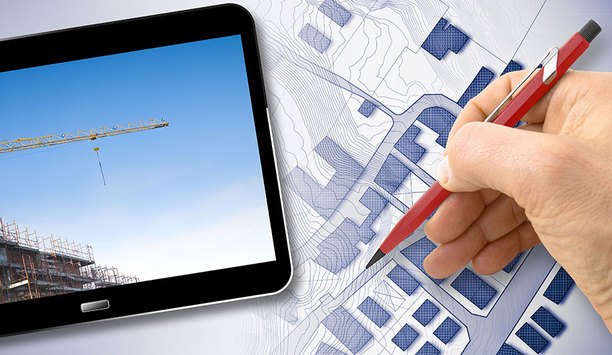Visual Plan - Experts & Thought Leaders
Latest Visual Plan news & announcements
The Security Industry Association (SIA) has announced the agenda, speaker line-up and programme for Part 3 of the 2021 SIA GovSummit, its annual public policy and government security technology conference. SIA GovSummit 2021 is being held as a three-part conference, the first and second of which took place on April 28 and June 9, 2021, and the third part is scheduled for Sept 21, 2021. SIA GovSummit Part 3 Each year, SIA GovSummit brings together government security leaders with private industry technologists for top-quality information sharing and education, on security topics affecting federal, state and local agencies. The 2021 conference explores emerging policy trends, the government’s technology needs and changes in the risk environment that shape the development of products and advanced systems integration. Hybrid conference Part 3 of the 2021 GovSummit will take place as a hybrid conference Part 3 of the 2021 GovSummit will take place as a hybrid conference, with attendees having the option to join in person or participate virtually via Zoom. The in-person component of the event will be held at SIA member company (and GovSummit sponsor), CertiPath’s facility at 1900 Reston Station Boulevard, in Reston, Virginia, USA. On-site attendees will have the opportunity to participate in a SIAThere! Networking reception and can even schedule tours of the GSA testing lab, in addition to attending the full schedule of seminars. Strict health and safety protocols enforced Health and safety precautions will be in place, at the in-person event, including physical distancing, and attendees will be required to provide proof of full vaccination. Masking will be strongly encouraged indoors, as per the recent recommendations from the Fairfax County Health Department. “In this final event of the 2021 SIA GovSummit, SIA will build on the top-quality programming from Parts 1 and 2, with a full agenda highlighting the most essential topics connecting government, security and technology,” said Jake Parker, Senior Director of Government Relations at SIA. Sharing updates on federal physical access control systems We look forward to bringing government and industry together in person, at our live event" Jake Parker adds, “We look forward to bringing government and industry together in person, at our live event, to network and explore critical issues, ranging from the latest updates on federal physical access control systems and infrastructure modernisation laws, to how government can leverage cutting-edge technologies, like artificial intelligence and 3D visualisation, to secure their facilities.” Part 3 of the 2021 conference will be held as a full-day session on Tuesday, Sept 21, kicking off at 11 a.m. EDT. Attendees will enjoy a key-note presentation from Dr. David Mussington, Executive Assistant Director of the Infrastructure Security Division, at the Cybersecurity and Infrastructure Security Agency (CISA), on security challenges and how to address them as a nation. Additional session topics will include: The latest on Federal Identity, Credential and Access Management (FICAM) and the GSA test laboratory for physical access control systems Trends and best practices in credential management, in order to help reduce vulnerabilities in access control New technologies for securing government facilities, including game-changing artificial intelligence (AI), 3D facility visualisation and a new framework for insider threat mitigation How government agencies can leverage the growth in video data, in order to support their missions Infrastructure modernisation legislation and the role of safety, and security solutions 2021 Women in Biometrics Awards At the GovSummit, SIA will also present the 2021 SIA Industry Advocate Award, presented to an individual making an extraordinary contribution of professional time, leadership and resources to position SIA and its members, to address public policies impacting the security industry. SIA will also present the 2021 Women in Biometrics Awards, a globally recognised programme, co-founded by SIA and SecureIDNews, and co-presented with sponsors, IDEMIA, Biometric Update and the SIA Women in Security Forum, which recognises innovative women creating a more secure world by guiding the biometrics technology market. Speakers for the event include: Keynote: David Mussington, Executive Assistant Director, Infrastructure Security Division, CISA, Clayton Brown, Executive Vice President, Smarter Security William Charlton, Director, Nuclear Engineering Teaching Laboratory and John J. McKetta Energy Professor, the University of Texas at Austin Michael Chiocca, Customer Success Manager, Public Sector, Genetec Lance Harper, Solutions Marketing Manager, HID Global Dustin Kisling, Vice President, Business Development and Partnerships, ZeroEyes Shaun Moore, Chief Executive Officer (CEO), Trueface Jeff Nigriny, Founder and CEO, CertiPath Jake Parker, Senior Director, Government Relations, SIA Eric Rojo, Managing Director, Magination Consulting International Kelly Watt, CEO and Founder, Visual Plan This event is free for all government employees, including U.S. and international federal, state, county and municipal-level staff, plus all military, law enforcement and public safety personnel. SIA GovSummit is considered a ‘widely-attended gathering’ and complies with all relevant event guidelines.
Insights & Opinions from thought leaders at Visual Plan
From satellite imagery to street views to indoor mapping, technology has disrupted our past world. This has left us dependent upon new ways to visualise large spaces. This new world has brought many benefits and risks. But what does that mean for the security professional or facility manager today and what technologies can be used to secure buildings and improve facility operations? A brief history of 3D technology Starting May 5, 2007 (inception 2001), Google rolled out Google Street View to augment Google Maps and Google Earth; documenting some of the most remote places on earth using a mix of sensors (Lidar/GSP/Radar/Imagery). The mission to map the world moved indoors May 2011 with Google Business Photos mapping indoor spaces with low cost 360° cameras under the Trusted Photographer program. In the earlier days, 3D scanning required a high level of specialisation, expensive hardware and unavailable computing power With the growth of 3D laser scanning from 2007 onwards, the professional world embraced scanning as effective method to create digitised building information modelling (BIM), growing fast since 2007. BIM from scanning brought tremendous control, time and cost savings through the design and construction process, where As-Built documentation offered an incredible way to manage large existing facilities while reducing costly site visits. In the earlier days, 3D scanning required a high level of specialisation, expensive hardware, unavailable computing power and knowledge of architectural software. Innovation during the past 8 year, have driven ease of use and lower pricing to encourage market adoption. Major investments in UAVs in 2014 and the commercial emergence of 360° photography began a new wave of adoption. While 3D scanners still range from $20K – $100K USD, UAVs can be purchased for under $1K USD and 360° cameras for as low as $100. UAVs and 360° cameras also offer a way to document large spaces in a fraction of the time of terrestrial laser scanners with very little technical knowledge. Access to building plans, satellite imagery, Google Street View, indoor virtual tours and aerial drone reconnaissance prove effective tools to bad actors The result over the past 10+ years of technology advancement has been a faster, lower cost, more accessible way to create virtual spaces. However, the technology advances carry a major risk of misuse by bad actors at the same time. What was once reserved to military personal is now available publicly. Access to building plans, satellite imagery, Google Street View, indoor virtual tours and aerial drone reconnaissance prove effective tools to bad actors. Al Qaeda terror threats using Google Maps, 2007 UK troops hit by terrorists in Basra, 2008 Mumbai India attacks, 2016 Pakistan Pathankot airbase attacks, ISIS attacks in Syria using UAVs, well-planned US school shootings and high casualty attacks show evidence that bad actors frequently leverage these mapping technologies to plan their attacks. The weaponization of UAVs is of particular concern to the Department of Homeland Security: "We continue to face one of the most challenging threat environments since 9/11, as foreign terrorist organisations exploit the internet to inspire, enable or direct individuals already here in the homeland to commit terrorist acts." Example comparison of reality capture on the left of BIM on the right. A $250 USD 360° camera was used for the capture in VisualPlan.net software What does this mean for the security or facility manager today? An often overlooked, but critical vulnerability to security and facility managers is relying on inaccurate drawing. Most facilities managers today work with outdated 2D plan diagrams or old blueprints which are difficult to update and share.Critical vulnerability to security and facility managers is relying on inaccurate drawing Renovations, design changes and office layout changes leave facility managers with the wrong information, and even worse is that the wrong information is shared with outside consultants who plan major projects around outdated or wrong plans. This leads to costly mistakes and increased timelines on facility projects. Example benefits of BIM There could be evidence of a suspect water value leak which using BIM could be located and then identified in the model without physical inspection; listing a part number, model, size and manufacture. Identification of vulnerabilities can dramatically help during a building emergency. First Responders rely on facilities managers to keep them updated on building plans and they must have immediate access to important building information in the event of a critical incident. Exits and entrances, suppression equipment, access control, ventilation systems, gas and explosives, hazmat, water systems, survival equipment and many other details must be at their fingertips. In an emergency situation this can be a matter of life or death. Example benefit of reality capture First Responders rely on facilities managers to keep them updated on building plans A simple 360° walk-through can help first responders with incident preparedness if shared by the facility manager. Police, fire and EMS can visually walk the building, locating all critical features they will need knowledge of in an emergency without ever visiting the building. You don’t require construction accuracy for this type of visual sharing. This is a solution and service we offer as a company today. Reality capture is rapidly becoming the benchmark for facility documentation and the basis from which a security plan can be built. Given the appropriate software, plans can be easily updated and shared. They can be used for design and implementation of equipment, training of personnel and virtual audits of systems or security assessments by outside professionals. Our brains process visual information thousands of times faster than text. Not only that, we are much more likely to remember it once we do see it. Reality capture can help reduce the need for physical inspections, walk-throughs and vendor site-visits but more importantly, it provides a way to visually communicate far more effectively and accurately than before. But be careful with this information. You must prevent critical information falling into the hands of bad actors. You must watch out for bad actors attempting to use reality capture as a threat, especially photo/video/drones or digital information and plans that are posted publicly. Have a security protocol to prevent and confront individuals taking photos or video on property or flying suspect drones near your facility and report to the authorities. Require authorisation before capturing building information and understand what the information will be used for and by who.There are a number of technologies to combat nefarious use of UAVs today Nefarious use of UAVs There are a number of technologies to combat nefarious use of UAVs today, such as radio frequency blockers and jammers, drone guns to down UAVs, detection or monitoring systems. Other biometrics technologies like facial recognition are being employed to counter the risk from UAVs by targeting the potential operators. UAVs are being used to spy and monitor for corporate espionage and stealing intellectual property. They are also used for monitoring security patrols for the purpose of burglary. UAVs have been used for transport and delivery of dangerous goods, delivering weapons and contraband and have the ability to be weaponised to carry a payload.Investigating reality capture to help with accurate planning and visualisation of facilities is well worth the time The Federal Aviation Administration has prevented UAV flights over large event stadiums, prisons and coast guard bases based on the risks they could potentially pose, but waivers do exist. Be aware that it is illegal today to use most of these technologies and downing a UAV, if you are not Department of Justice or Homeland Security, could carry hefty penalties. Facility managers must have a way to survey and monitor their buildings for threats and report suspicious UAV behaviours immediately to authorities. At the same time, it’s critical to identify various potential risks to your wider team to ensure awareness and reporting is handled effectively. Having a procedure on how identify and report is important. Investigating reality capture to help with accurate planning and visualisation of facilities is well worth the time. It can help better secure your facilities while increasing efficiencies of building operations. Reality capture can also help collaboration with first responders and outside professionals without ever having to step a foot in the door. But secure your data and have a plan for bad actors who will try to use the same technologies for nefarious goals.
Maximising security and performance
DownloadGuide for HAAS: New choice of SMB security system
DownloadSecurity practices for hotels
DownloadAccess control system planning phase 2
DownloadThe key to unlocking K12 school safety grants
Download







